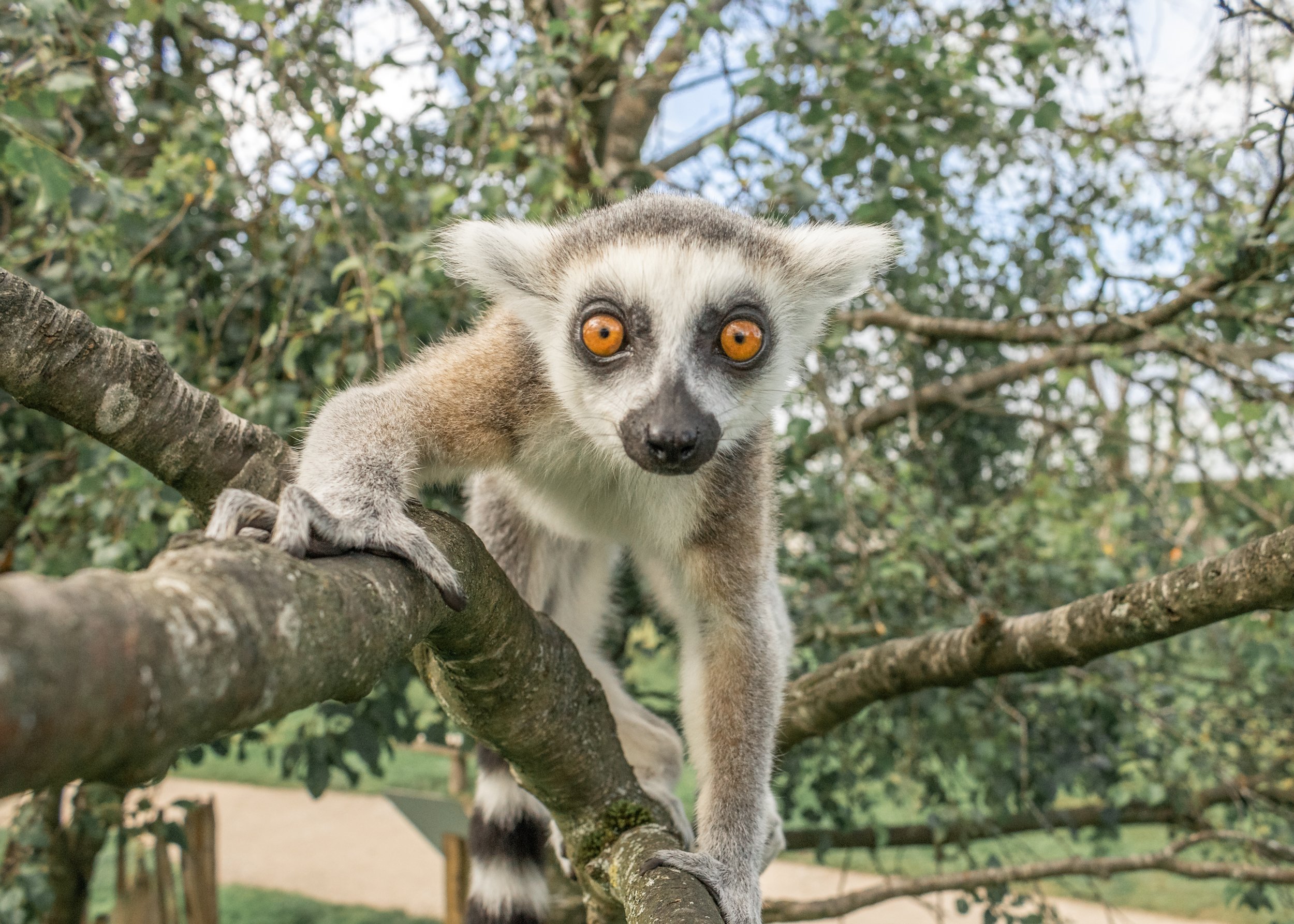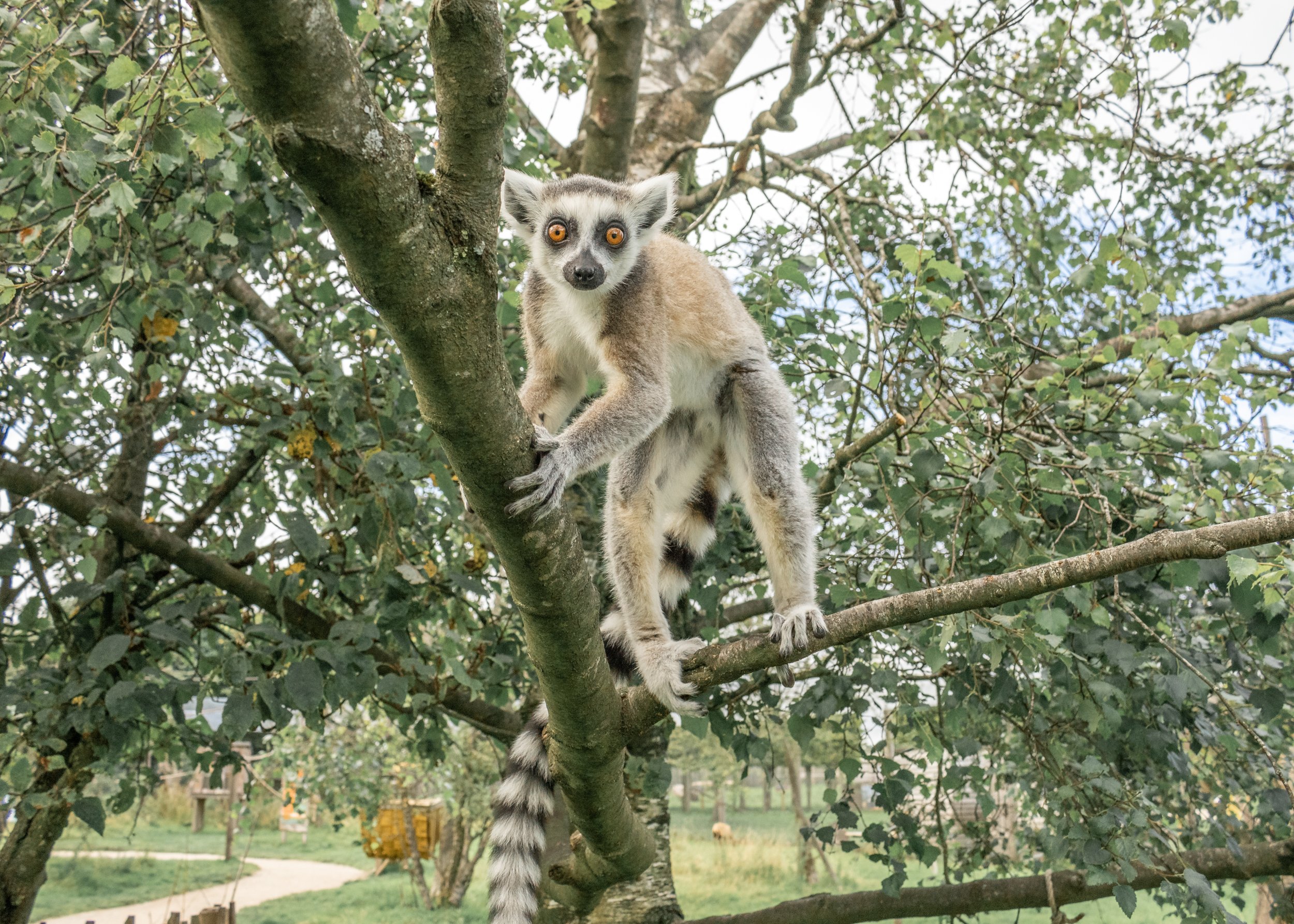
RING-TAILED LEMUR
Lemur catta
It’s easy to see how the Ring-tailed Lemur go its name; its black and white tail makes it one of Madagascar’s most distinguishable residents, but did you know the name Lemur comes from the Latin for ‘ghost’? These striking animals are only found in southern Madagascar where they occupy a number of different habitats; from lowland scrub to deciduous forest.
The Ring-tailed Lemur’s ability to exploit a number of habitats means it has quite a varied diet, consisting of fruit, leaves, bark, sap, flowers, small insects and even small vertebrates such as chameleons.
In the wild, Ring-tailed Lemurs live in social groups of up to 25 individuals. The group tends to be matriarchal with one alpha-female reigning supreme and forming the focal point for the group as a whole. The females also take the lead when it comes to confrontations with other groups over territories, often facing up, alarm barking and occasionally fighting with the opposition.
Breeding
Breeding in the Ring-tailed Lemurs usually occurs in April, with the young being born in September after a gestation period of around 140 days. A mother usually gives birth to a single pup (though twins aren’t uncommon), which will spend the first two weeks of its life clinging to the underside of its mother, before going off to explore its new home. Ring-tailed lemurs reach sexual maturity at between two and a half and three years of age and can live for up to 16 years.
Threats in the wild
The Ring-tailed Lemur is currently classified as Endangered on the IUCN Red List. As with many of Madagascar’s rare and unusual species deforestation and hunting is playing a major role in the decreasing numbers of this most enigmatic of animals.






